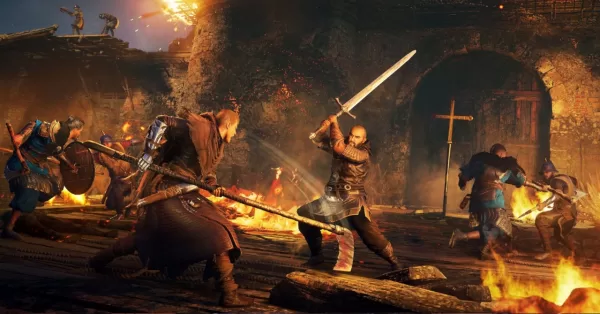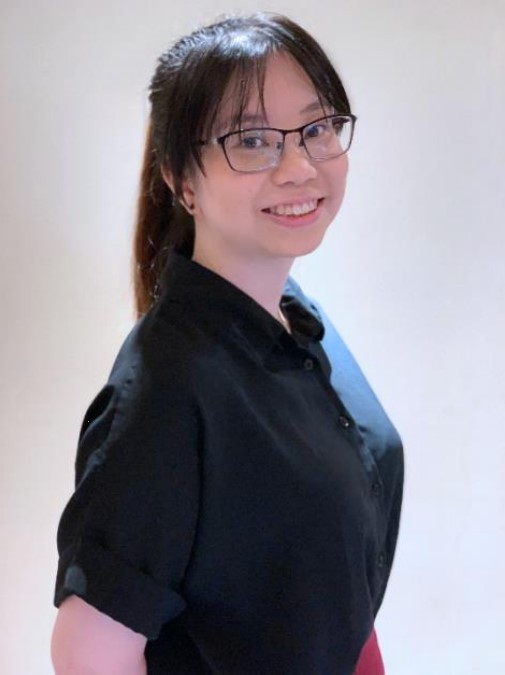Interview: Ubisoft Singapore’s Joan Hsu shares her experience in developing AC Valhalla’s Siege of Paris
We got to interview Ubisoft Singapore lead animator, Joan Hsu, and she shared what it was like to animate AC Valhalla's Siege of Paris expansion.

Back in August, Assassin’s Creed Valhalla’s Siege of Paris expansion was released; and did you know that the game was developed primarily by Ubisoft Singapore and Ubisoft Philippines. While these two Ubisoft studios have helped in other Assassin’s Creed games in the past, this expansion marks the first time that the studios have helmed a project of this scale.
Recently, we got to interview Ubisoft Singapore Lead Animator, Joan Hsu (who has also worked on various other games in the Assassin’s Creed series), and she shared what it was like to work on such a large-scale expansion.
Here is the full interview with Joan Hsu (edited for clarity):
What was your day-to-day like during the development of the expansion?
JH: So as the lead animator, I’m leading a team of animators, and I mostly make sure that the team has the tools and data that they need to be able to work. I also provide them with feedback so that they can polish their work and create the animations to match the direction which we are going to, and also to match the quality in which the main game has already set for us. Even though it’s an expansion, we do have to ensure that the quality matches that of the main game. I also work with the game designers, and project managers to make sure that we are on track to deliver for launch.
How much of the vision for Siege of Paris was already in place when you started development?
JH: When I joined, a lot of the narrative, as well as the game features for the game had been was discussed by our producers and pitched to the directors in one trail. As I came in, I joined in to provide some input on what the team can produce in the animation side.
I also worked together with the animation directors to work with them on what our animation direction should be, and what kind of style of animation we should be adhering to as well. As you know the animations for Eivor, the direction is mostly about creating very physical and brutal animation. So, for us, as we worked on the siege of Paris, we wanted to maintain that level of quality and direction to make it fit with the entire game experience.
What for you is the biggest challenge during the game’s development?
JH: I would say that the biggest challenge for the animation team was really to match that kind of brutal Norse and Viking-ness, because it’s the first time the animators are working with fight animation. So, with the fight animation, there’s a lot of physicality involved in it. Previously, our team has been working on more acting animations such as Eivor getting around the boats and being the captain of the longship, those kinds of animations involved interacting with the props and not so much with fighting with other people. So, there was not so many opportunities for the animators to display that kind of brutalness in the naval aspect. So, when we moved on to making the fight animations for the weapons, and for the abilities, the animators had to get really involved in trying out the new poses and the movement for Eivor’s fight scenes. So that was a challenge for the team to learn and improve on.
During that process of creating animations for the game, did an animator try to act out the animations as basis? Or what did you use as reference?
JH: One of the steps in our process is that we take video references, so that the animators will know how the movement will look like. And we want to try to recreate that using animations to be as realistic as possible. Firstly, they would look online on any video channels to go and see if there’s any references that will be useful for them. And then from there they will draw some inspirations, and then they themselves will also get up and try those action and record themselves doing it. Once they record themselves doing it and translate that into the software that we have and animate it. Our team members took video references of themselves so that they can better understand the physicality of it as well.
What was the process like in developing this scale of an expansion, all while there’s a pandemic going on and varying levels of quarantine?
JH: Okay, so we did have periods in which there were restrictions set by the government where we had to stay at home, so work from home was a default for us. There are some challenges that come with working from home, but with the Ubisoft network, because we are already used to working in global teams and working and communicating with teams from other countries, we already had an infrastructure in place for us to continue on this communication between teams and between individuals.
One of the main challenges was actually testing the game. Testing the animations, especially, because in the past, we could simply just walk over to someone’s station and then we could see the changes there and then. But now, we had to rely on the team’s chat, our screen sharing, or remoting into our PCs. So, there might be some delays here and there in getting the visuals or there might be lag, things like that.
Another big challenge is there can only be one person testing the game at one time. In the past, you could just grab the controller, and somebody would simply just test it very quickly. So, one of the things that we tried while we were developing the game was that we would have deliberate and frequent check-ins. We’ll set up a meeting at the end of the day when the changes are more or less done already. And then the team members can then see what the changes are together as a team. Something good that came out of this that was kind of unexpected, is that because everybody was deliberately checking in and being involved in that meeting. We could get each and every single person to test the game at least once. So, it’s a good chance for everybody to bond together and learn something new about each other as well.
Aside from your teammates at Ubisoft Singapore, did you coordinate with other Ubisoft studios around the world as well?
JH: Some other studios that we work together aside of course from Ubisoft Montreal, is Ubisoft Chengdu. So, Chengdu has a team of animators there as well, and they were also creating animations for the city of Paris. So, we were coordinating with them to see how we as a team both here in Singapore as well as there in Chengdu, how we could spread out the load and work together to deliver the animations on time
Our other partner is also Ubisoft Philippines. So, Ubisoft Philippines was creating the 3D visuals for many of the weapons are the props that we were using for the Siege of Paris. Primarily, we worked with them for the animation of the weapons because we needed to create the scythes, as well as the swords. So, we were really happy to see the cool and exciting 3D visuals that they’ve actually created. Because the animations have to make sense with the 3D visuals, we coordinated with them to see if we make it in certain specifications, to make sure that together the animations and visuals will look good together.
Given how big of an undertaking the development of this expansion was, which part or which aspect of Siege of Paris are you most proud of?
JH: Well, there’s so many!
First, I’m proud of the two new weapons in the Siege of Paris. One is the scythe, which is a really long weapon with a blade at the end. And the other one is the new, one-handed sword. The animations were created here in Singapore, as well as in Montreal. The 3D assets were made in the Philippines and again I really want to thank them for creating such awesome visuals, it makes us very excited to see them.
Aside from that, we really enjoyed creating the animations for it [overall]. I think the animation team had a lot of fun, like pretending that they were swinging the scythes and the swords in the office.
The next thing that we’re really excited about is the Rebel missions. So, Rebel missions is a replayable activity that features high difficulty battles. The player will accompany a small force of Frankish rebels, and they would face against an enemy force of similar size and skill as the player. So, the purpose of the rebel missions is to destabilize Charles’ defense forces and to drain his resources. Eivor will pick some rebels with them as well while undertaking these missions, and these missions have different objectives. It could be trying to get intel from a camp or assassinating key military personnel, and at the same time, Eivor will have to make sure that his rebels who are accompanying rebels are safe. You want to try to keep as many of them safe as possible. [Along with this], I think some of the abilities were really fun to create. We had a lot of fun developing them and trying to make them as explosive and enjoyable for the player, so that we want them to use [the abilities] against the enemies as much as possible.
I’ve always wondered from a developer’s point of view, since you test the game all the time during development, do you still enjoy playing the games you helped make for leisure?
JH: Yes, it’s still fun to play the game because we can see how [the things we worked on] fit in with the rest of the game. And it’s exciting to see what the rest of the entire development team has also created, so it is still a fresh experience when I play the game as a player, getting to see different aspects of the world and appreciate it.
Given that you were able to play the expansion, which part of the game is your favorite? Or what did you still find fresh when playing through the expansion?
JH: I think what I really enjoy about it is walking through the different maps that we have. Because we have created the new frontier map, it’s a new world to explore. There are different cities to explore as well.
One of the things I like to do is just explore the area and see the beautiful flower fields for example. And then there’s also the slums area of Paris, and you can see these differences in this areas and appreciate the work that biomes team and the art team has actually done to give a different feel every time you walk into a different area.
Is there another Ubisoft series or property that you would like to work on in the future, aside from Assassin’s Creed?
Ubisoft has so many exciting titles that I have not actually considered working on any other projects right now. Especially because of the Assassin’s Creed universe, which is very Vast and has expanded so much since the first game. When I first started out, there’s always new ways that the brand has been pushing and trying to expand on it. Right now, I’m also very happy and proud to work with my current team. So, I also have a team of very talented young animators, and I would like to continue working with them to see them grow as well.





